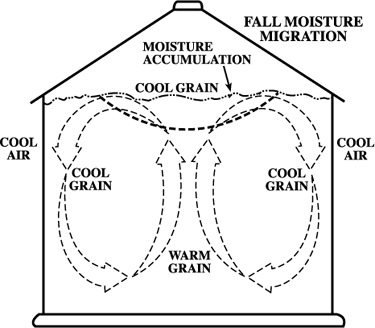Did you take all of your 2012 corn to the elevator or do you have corn in the bin? asks Illinois blogger Stu Ellis, who posted this report at www.farmgateblog.com.
November 15, 2012

Did you take all of your 2012 corn to the elevator or do you have corn in the bin? asks Illinois blogger Stu Ellis, who posted this report at www.farmgateblog.com.
If you are storing corn at home, it should be protected from the potential for growth of mycotoxins and their production of aflatoxin. Those will more than negate any benefit you had ever hoped to receive from farm-stored corn this fall. Farmers with corn in their bins are taking an extreme chance of losing the value of the grain unless it is well managed. But how do you do that? Ellis asks.
The 2012 drought not only shorted the crop yield, but replaced it with the potential for aflatoxin, which was certainly not a fair trade, he says. But that may be the hand you are dealt and managing the quality of the grain in the bin could be a significant challenge this fall, over the winter, and into the spring for 2013 delivery.
University of Nebraska ag engineer Tom Dorn provides some step by step guidance to help you empty your bins with corn that is the same quality at which it was stored. Quality can always decrease, but can never increase when in storage.
Dorn suggests that you set three goals for your stored corn:
Dry corn down to 13% moisture if it’s to be stored for more than a month.
Run aeration fans whenever the air temperature was 10 degrees cooler than the grain temperature since the rate of mold growth is slower at cooler temperatures.
Cool stored grain down to 30°F (plus or minus 5 degrees) to stop mold growth. If you have not cooled the grain to the recommended temperature for late fall and winter, do so soon, especially if you plan to keep the grain into the new year.
Within the bin air movement is quite dynamic. And when the air moves, it carries moisture with it. Cool air moves down, warm air moves up, and the cooler steel on the sides of the bin can generate movement inside the bin. Underneath the roof, where the grain is cool, rising warm air in the middle of the bin will carry moisture upward until it condenses in the top layer of grain. Dorn says the convection currents will create a wet spot in the center of the bin, and that is where fines collect and where molds will also grow rapidly.

He suggests driving the warmth and the moisture out of the grain with aeration fans when the humidity is low and air temperature is 30-35 degrees. Regularly check the quality of the grain and any musty odors that appear in the top of the bin while the fan is running. One indication that the grain is still wet will occur if the underside of the bin roof is wet when the outside air is cool. If that occurs, run the fan long enough to push the temperature front completely through the grain.
How Long Should Fans Run?
Dorn says, a rule of thumb is, the time (hours) to push a temperature front through a bin of grain is 15 divided by the airflow-cubic-feet per minute per bushel cfm/bu.
For example, a bin used for drying grain should be able to produce about 1.0 cfm/bu so it would take about 15 hours to push a temperature front through the grain (15/1 = 15). In another example, a bin equipped with a fan able to push only 0.3 cfm/bu could push a temperature front through in 50 hours (15/0.3= 50).
Summary
Corn being stored into the winter should be cooled as the outside air temperature cools, and should be dried to no more than 13% in an effort to retard any further growth of molds that may produce aflatoxin. Convection air currents are constantly moving in the bin, and depositing moisture in the top center of the grain where fines exist and molds will grow. Push warm and moist air out of the grain as the outside air temperature cools with aeration fans.
You May Also Like



